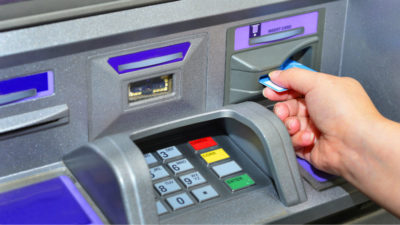Real estate investment trusts (REITs) earn rent and are a good way for investors to get passive monthly income. H&R Real Estate Investment Trust (TSX:HR.UN) is the second-largest Canadian REIT with a market cap of $6.2 billion.
At under $22 per unit, it offers an above-average yield of 6.2%. Investing $10,000 today would generate $620 in passive annual income. Should income investors consider it today?
First, let’s take a look at its business.
The business
H&R is a diversified REIT of 518 properties with 47.1 million square feet across a portfolio of office, retail, and industrial assets in Canada and the United States.
In the quarter that ended in March, H&R generated 53% of same-asset operating income from office assets, 38% from retail assets, and 9% from industrial assets.
In the same period, it generated 33% of same-asset operating income from Ontario, 30% from the U.S., 27% from Alberta, and 10% from other Canadian provinces.
Particularly, in the U.S. H&R owned 85 retail assets, eight residential assets, and seven office assets at the end of the quarter. As well, it had 33.6% interest in the ECHO portfolio of 207 retail properties.
Strengths
Since 1997 H&R has maintained a strong portfolio occupancy of more than 95%.
H&R earns a meaningful portion of operating income from the U.S. With the current stronger U.S. dollar against the Canadian dollar, this exposure is seen as a strength.
H&R earns a meaningful portion of operating income from Ontario, which is one of the most economically stable provinces in Canada.
In the first quarter, H&R’s adjusted funds from operations payout ratio was 82%, which provides a margin of safety for its monthly distribution.
Weaknesses
H&R earns a meaningful portion of operating income from Alberta. Any Albertan exposure is viewed negatively because oil prices remain weak, even though they have recovered from lows recently.
Furthermore, Encana Corporation, whose earnings and cash flows are expected to continue their slides this year, contributes 11.4% to H&R’s rental income.
Compared to the first quarter of 2015, in the first quarter of this year H&R’s same-asset occupancy of its Canadian portfolio declined 2.3% and its U.S. portfolio declined 0.7%.
Although the occupancy levels in Ontario and other Canadian provinces also declined for the REIT, it wasn’t surprising that the Canadian portfolio occupancy was dragged down the most by Alberta’s occupancy, which went from 98.4% to 93%.
During the financial crisis in 2009, H&R cut its distribution in half. To this day, the distribution hasn’t recovered to its previous level.
Conclusion
For the time being, H&R’s distribution yield of 6.2% looks safe as its payout ratio sits at 82% with some margin of safety.
Its U.S. portfolio shows greater strength than its Canadian portfolio. However, its Albertan portfolio is weighing on its performance, so its shares are priced at a slight discount of about 11% from its book value.
It’s uncommon but not impossible to find yields of about 6% without Albertan exposure. So, investors should either consider H&R at a lower level or explore other safer REIT opportunities for monthly income.







